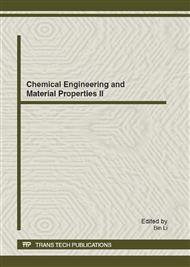p.491
p.496
p.500
p.504
p.508
p.513
p.519
p.523
p.528
Herb Residues Gasification in a Circulating Fluidized Bed
Abstract:
A circulating utilization way of herb residues is designed to convert herb residues to gas fuel in industrial-scale by a circulating gasification bed gasifier in this work. The gasification characteristics of herb residues in the circulating fluidized bed of 300kg/h were investigated in about 200 hours. The results indicated that the gas composition and tar yield were affected by oxygen to biomass ratio (O/B ratio). The lower heating value of product gas was 4 to 5MJ/m3 using herb residues as feedstock. When O/B was 0.37, the product gas reached a good condition with lower heating value of 4.89MJ/m3.
Info:
Periodical:
Pages:
508-512
Citation:
Online since:
July 2012
Authors:
Keywords:
Price:
Сopyright:
© 2012 Trans Tech Publications Ltd. All Rights Reserved
Share:
Citation:


